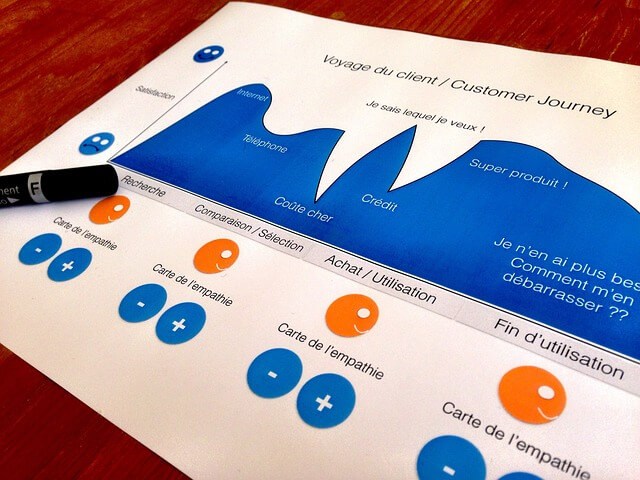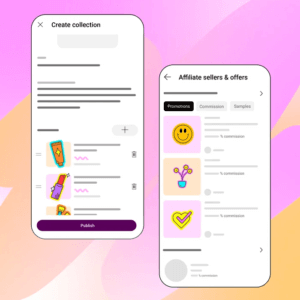In today’s rapidly evolving digital landscape, marketers face an increasingly complex challenge – attributing the value of their advertising efforts accurately. With consumers traversing multiple channels and devices before converting, the days of relying solely on last-click attribution are long gone. Enter Multi-Touch Attribution (MTA), a game-changing approach that allows marketers to gain deeper insights into their paid media campaigns, allocate budgets more effectively, and ultimately, maximize ROI.
What Is Multi-Touch Attribution?
Before diving into the intricacies of MTA, let’s take a quick look at the prevailing attribution models. Most marketers are familiar with the last-click attribution model, which assigns all credit to the final interaction that led to a conversion. While this model is straightforward, it oversimplifies the customer journey.
Imagine a scenario where a user first discovers your brand through a Facebook ad, later clicks on a Google search ad, and finally converts on your website. In a last-click attribution model, Google search would receive all the credit, ignoring the critical role Facebook played in driving initial awareness and interest.
MTA, on the other hand, recognizes that customers often interact with multiple touchpoints across various channels before making a purchase. It seeks to distribute credit among these touchpoints based on their respective contributions to the conversion. This provides a more accurate picture of how different marketing channels and campaigns work together to drive results.
MTA is not a one-size-fits-all solution; rather, it encompasses several models designed to suit different business objectives and customer journeys. Here are a few common MTA models:
- Linear Attribution: In this model, credit is distributed equally among all touchpoints, giving each interaction equal weight.
- Time-Decay Attribution: Touchpoints closer to the conversion receive more credit, recognizing the diminishing influence of earlier interactions.
- Position-Based Attribution: It allocates more credit to the first and last interactions (the touchpoints at the beginning and end of the customer journey) while assigning less credit to those in the middle.
- U-shaped attribution: This model assigns more credit to the first and last touchpoints in the customer journey.
- Conversion-based attribution: This model assigns credit to the touchpoints that are most likely to lead to a conversion.
- Algorithmic Attribution: This sophisticated model employs machine learning algorithms to assign credit based on historical data and complex patterns.
Why Multi-Touch Attribution Matters
In today’s dynamic digital landscape, understanding the impact of your marketing efforts is paramount. Multi-Touch Attribution (MTA) is your compass in this data-driven voyage.
The Rise of Cross-Device and Cross-Channel Shopping
To understand the significance of MTA, consider the modern consumer’s behavior. Shoppers often start their journey on one device (say, a smartphone), continue on another (perhaps a laptop), and complete a purchase in-store. They might see an ad on Facebook, research on Google, and receive an email offer before converting. Such cross-device and cross-channel shopping is the new norm, and traditional attribution models struggle to account for it.
According to a study by Google, 90% of consumers switch between devices to complete tasks. On average, shoppers use at least 2.8 devices while making an online purchase. These statistics underline the complexity of the customer journey. In fact, another study by Google found that the average customer journey now takes 7 to 10 touchpoints on average. This highlights the need for more nuanced attribution models like MTA.”
The Impact of Incomplete Attribution
Failing to attribute conversions accurately can lead to skewed data and misinformed marketing decisions. Without MTA, marketers may:
- Overvalue Certain Channels: Relying solely on last-click attribution may result in overallocating budgets to specific channels or campaigns, neglecting others that contribute to the conversion path. Forrester’s study highlights that businesses using MTA can improve their ROI from paid media campaigns by up to 30%.
- Underestimate Content Marketing: Content plays a pivotal role in educating and nurturing potential customers. However, it often falls into the “assist” category in traditional attribution models, receiving less credit than it deserves.
- Miss Opportunities for Optimization: Incomplete attribution may mask underperforming channels, preventing marketers from identifying areas for improvement.
Benefits of Multi-Touch Attribution
The advantages of employing MTA for paid media campaigns are substantial:
- Improved Decision-Making: MTA empowers businesses to make informed decisions about marketing budget allocation. By identifying the most conversion-effective channels, businesses can concentrate resources where they’ll have the greatest impact.
- Increased ROI: MTA allows businesses to enhance their Return on Investment (ROI) from paid media campaigns. It uncovers the most productive channels, enabling campaign optimization for maximum efficiency.
- Enhanced Customer Insights: MTA offers valuable insights into customer buying behavior. By monitoring the customer journey, businesses can pinpoint the most effective channels for reaching their target audience and driving conversions.
- Enhanced Transparency: MTA boosts transparency in marketing efforts by providing a clear view of each channel’s contribution to conversions. This transparency helps businesses build trust with their customers.
By integrating these benefits, the section provides a more holistic view of why multi-touch attribution is vital in today’s marketing landscape.
How to Choose the Right MTA Model
Selecting the appropriate Multi-Touch Attribution (MTA) model can be a crucial decision in optimizing your paid media campaigns. It’s not a one-size-fits-all scenario, and the ideal model largely depends on your unique circumstances. Here’s a more in-depth look at how to choose the right MTA model:
- Understanding Your Goals: Begin by defining your objectives. Are you seeking a better understanding of the customer journey, or do you aim to optimize your budget allocation for maximum ROI? Clarity in your goals will serve as your guiding light in the selection process.
- Customer Behavior Analysis: Dive into your customer data. Study how they interact with your brand across various touchpoints. Identify common patterns and behaviors. Are customers engaging with multiple channels before converting, or is there a specific path they typically follow?
- Complexity Assessment: Consider the complexity of your customer journey. If it’s relatively straightforward, a simpler model like linear attribution might suffice. Conversely, if your customers engage in a complex, multi-touchpoint journey, an algorithmic attribution model could provide deeper insights.
- Consult with Experts: Don’t hesitate to seek expert advice, such as from a seasoned agency like Angora Media, experienced in MTA implementation. They can offer valuable insights and recommend the most suitable model for your scenario.
- Test and Adapt: Pilot your chosen model. Start with a test phase to evaluate its performance. Does it accurately reflect your customers’ behavior? Be prepared to make adjustments as you gather real-world data.
By taking these steps, you can make an informed decision regarding the MTA model that aligns best with your objectives and customer journey dynamics. Remember, the right model can unlock deeper insights, improved budget allocation, and, ultimately, enhanced ROI for your paid media campaigns.
How to Implement MTA
Implementing MTA can be a complex process, but it is essential for businesses that want to get the most out of their paid media campaigns. Here are some tips for implementing MTA:
1. Data Collection and Integration
To implement MTA successfully, you need a comprehensive view of your customers’ interactions across all touchpoints. This necessitates the integration of data from various sources, including your website, CRM system, advertising platforms, and analytics tools.
2. Define Your Objectives
Determine your goals and objectives for implementing MTA. Are you looking to understand the customer journey better, optimize budget allocation, or measure the true impact of your marketing efforts? Clear objectives will guide your MTA strategy.
3. Choose the Right Model
Select an MTA model that aligns with your objectives and customer behavior. Consider consulting with experts or using algorithmic attribution models if your customer journey is highly complex. Nielsen’s study found that 70% of consumers interact with a brand across multiple channels before making a purchase.
4. Testing and Calibration
Before fully implementing MTA, conduct tests and calibrations to ensure the accuracy of your chosen model. This step is crucial for avoiding biases and ensuring that your attribution model reflects real-world customer behavior.
5. Monitor and Iterate
MTA is not a one-and-done process. Continuously monitor your attribution results and refine your model as your marketing landscape evolves. Regularly assess the impact of MTA on your ROI and make data-driven adjustments accordingly. Remember that 80% of marketers say that MTA is essential for making better marketing decisions (based on a study by Ascend2).
Actionable Tips for Maximizing ROI with MTA
MTA is a powerful tool that can help businesses maximize the ROI from their paid media campaigns. By tracking all of the touchpoints in the customer journey, MTA can help businesses identify the most effective channels and campaigns for their target audience. If you are serious about improving the performance of your paid media campaigns, then MTA is a must-have tool.
By considering the benefits of MTA, businesses can gain a competitive edge in today’s data-driven marketing landscape.
Now that you understand the importance of MTA and how to implement it, let’s explore some actionable tips to help you make the most of this powerful attribution approach:
- Optimize Customer Touchpoints: Identify the key touchpoints in your customer journey and optimize them for maximum impact. Tailor content and messaging to address specific stages in the journey, ensuring a seamless and engaging experience.
- Invest in Content Marketing: Content often serves as the initial touchpoint in a customer’s journey. Allocate resources to create valuable, educational content that attracts and nurtures leads, recognizing that its role in MTA can be significant.
- Budget Allocation: MTA provides insights into the effectiveness of different channels. Use these insights to allocate your budget more effectively, redistributing resources from underperforming channels to those that contribute significantly to conversions.
- Cross-Device Tracking: Implement cross-device tracking solutions to understand how customers switch between devices during their journey. This data is crucial for accurate attribution.
- Regularly Review and Adjust: Stay agile and be prepared to make adjustments as you learn from your attribution data. Marketing channels and consumer behavior.
At Angora Media, we understand the intricacies of Multi-Touch Attribution and its pivotal role in optimizing your paid media campaigns. If you’re looking for expert guidance on implementing MTA or have questions about how it can benefit your business, we’re here to help. Schedule a short Zoom meeting with us, and let’s unlock the full potential of your marketing efforts through Multi-Touch Attribution.”








